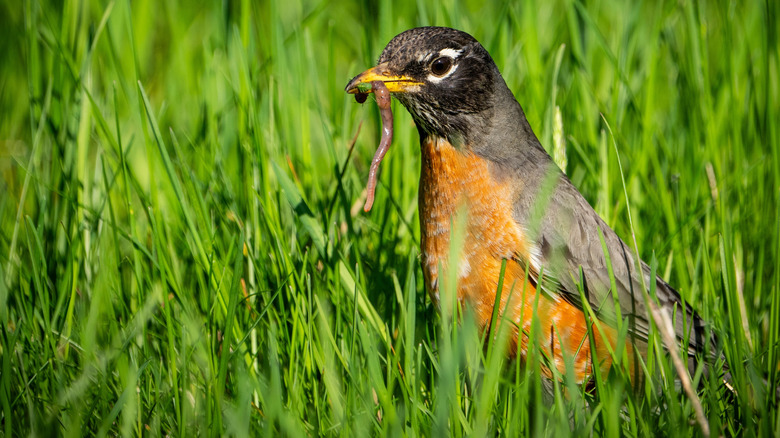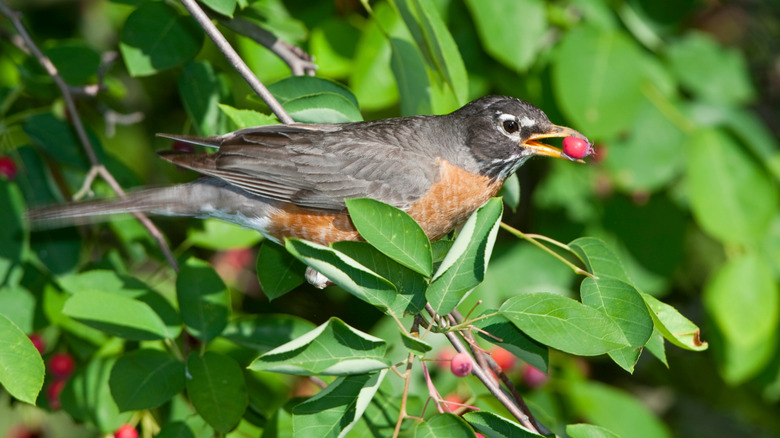The Stunning Ornamental Tree That Will Attract Robins To Your Yard In Any Season
Whether they're roosting in our trees in large flocks or walking around our yards looking for earthworms, American robins can be welcome visitors. If you're hoping to attract more of these birds and have them visiting your property all year long, try growing plants that offer wildlife benefits in all seasons, such as serviceberries (Amelanchier spp.), also known as juneberries. Serviceberries are worth considering because these fruit-bearing trees attract birds, including robins, while also adding visual interest to the landscape.
Serviceberries grow as attractive shrubs or trees that provide ornamental value in every season of the year. There are 24 different species of serviceberries, with native ranges across North America, Europe, the Mediterranean region, and parts of Asia. With diverse forms, this genus of trees and shrubs provides a number of stunning landscaping options for attracting robins and other birds to your yard. The tree also works for yards without a lot of space, since the tallest serviceberries reach only 30 to 40 feet in height. In addition to its all-season importance for robins, serviceberry is the native tree you'll want to grow to attract wildlife such as butterflies, moths, and bees as well.
How robins use serviceberry trees in spring, summer, fall, and winter
Although robins appreciate serviceberries in any season, spring and summer are when these trees offer the birds a full banquet. Early spring sees robins using serviceberries and other trees in your yard as nesting sites to raise their young. While serviceberries' stunningly beautiful spring flowers catch our eye, up to 92 different species of butterflies and moths caterpillars dine on its foliage, using the plants as a host. All those caterpillars provide excellent food for robins and their babies. In summer, when serviceberries' attractive fruits ripen, both young and adult robins gorge on the berries. The branches of these trees also provide places for robins to roost in the summertime.
In autumn, while the leaves of these trees are turning pinkish red, creating attractive fall color in our yards, serviceberries continue to provide shelter for robins and other birds. Come winter, when the silvery bark of serviceberry trees lends an ornamental glint to the landscape, robins continue roosting close to sources of food. Apart from serviceberries, be sure to grow other trees and shrubs that provide a winter habitat for birds, such as American holly (Ilex opaca) and eastern redcedar (Juniperus virginiana).

